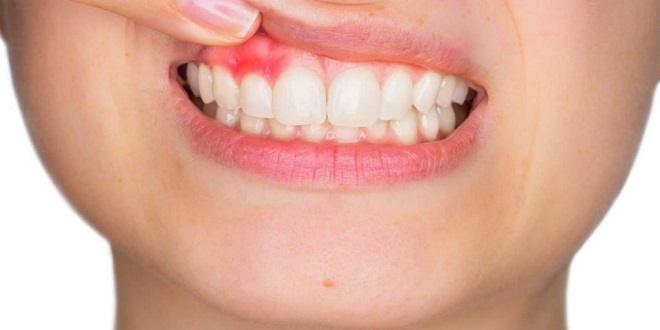What if a Dental Abscess Bursts Itself?

Gum Abscess
Dental infections that are common include tooth and gum abscesses. Proven statistics show that abscess-related admissions to hospitals in the United States are 1 per 2500 people. Although they are distinct infections, tooth and gum abscesses share certain symptoms and treatment methods. Gum infection is found on the gums, while tooth abscess occurs inside the tooth. Both conditions are usually caused by dental-related problems. Poor oral hygiene, for example, is a common cause of gum and tooth abscesses. This article will focus on gum abscess and the correct steps to follow if the infection occurs.
What’s a Gum Abscess?
A gum abscess can also be called a periodontal infection. It is a condition where pus builds up in the gums due to bacterial infections. This condition is more common in adults than it is in children. It can also be caused by weak gums or other dental conditions. This is a serious condition that requires immediate medical attention. Although the infection can heal itself, it is important to seek immediate medical attention. The condition can cause other serious health problems if it is not treated. A severe or untreated periodontal abscess can lead to sepsis. This occurs when a bacterial infection spreads through the bloodstream. Sepsis refers to a condition where the body’s immune system attacks body tissues and fights an existing infection. Sepsis can cause mental problems and drop in blood pressure. Sepsis can cause blood pressure to drop drastically, leading to organ collapse. This can lead to death. Untreated, a gum abscess can lead to death.
Gum Abscess
Poor Oral Hygiene
Regular flossing and brushing with the correct tools and supplies is a great way to maintain good oral hygiene. Plaque buildup is eliminated by this. Plaque, which is a thin white film on the enamel and between the teeth from acid and food we eat, is caused by plaque. Plaque eventually causes bacterial infection. If you don’t floss regularly, plaque can harden under your gumline and become tartar. Tartar is hard to remove, and it’s full of bacteria. It invades the roots and breaks down bones that support the teeth.
Periodontal Disease
Poor oral hygiene, smoking, repeated medication use, and gingivitis are all factors that can lead to this common dental problem. Gum abscess is more common with periodontal disease. This happens when the gums and soft tissue around them are damaged. The gums begin to pull away from the teeth as a result. Deep pockets can form, making them a perfect hiding place for bacteria. It is hard to get rid of food or tartar from these pockets. This can lead to tissue damage and bacterial infections.
Tooth Decay
Poor oral hygiene can lead to tooth decay. Acids in many foods and beverages can cause enamel erosion. Bad oral hygiene, such as a lack of brushing or flossing, can cause enamel to erode and create breeding grounds for bacteria. Tooth decay is the result. If tooth decay is not treated for a while, it can lead to pain. A gum abscess could cause the pain.
Weak Immunity
Your body is more susceptible to infections if it has a weak immune system. There are many germs in the human mouth. Experts recommend flossing twice daily and using fluoride toothpaste. A weak immune system can lead to a body that is unable to fight off bacterial infections or other pathogens, which could result in life-threatening situations. Poor dental hygiene can increase the likelihood of developing a periodontal abscess. It is important to maintain good oral hygiene regardless of how your immune system is performing.
What If Gum Abscess Bursts Itself
Do not assume your gum abscess will heal by itself. These are some important points to remember.
Seek Medical Attention
Remember that infection can spread from a ruptured abscess. Because not all fluid will drain after the pocket pops. This situation could lead to serious complications. The infection could spread to the neck and back, increasing the risk of sepsis. Your orthodontist should be consulted for professional advice. To prevent serious infection, the health specialist will examine the area and drain any pus.
Over the-Counter Medication
OTC drugs can also be used to relieve the pain and other discomforts that are caused by an abscess. To treat the infection, first use antibiotics. NSAIDs are the best OTC medication for gum abscesses as recommended by dental professionals. Naproxen and ibuprofen are the most popular. These medications reduce inflammation and pain.
Cold Compress
Applying an icepack to the affected area will reduce inflammation and pain. Ice is a home remedy for gum abscess because it causes blood vessels to constrict, which decreases blood circulation.
Garlic Paste
Garlic is well-known for its antibacterial properties. Expert nutritionists believe that garlic is more potent when raw. Garlic contains a variety of antioxidants and medicinal compounds, which can boost immunity, lower blood pressure, and reduce pain. Garlic paste can also be used to drain the fluid from the abscess area.
Baking Soda Paste
Baking soda is antibacterial. Baking soda is an effective way to remove plaque from the gums and teeth. Combine half a teaspoon of baking soda and half a cup water. Stir for five minutes.
Saline Water
Saltwater has antibacterial properties, much like baking soda. Combine half a teaspoon of salt with warm water. Stir.
Home remedies will not be enough to treat a gum infection, even if it has already ruptured. The other options listed above should be used after you have sought medical attention or reduced the pain.
Key Takeaway
If left untreated, a gum abscess can lead to other serious complications. It is important to seek professional medical attention even if the abscess appears to be painless. Sometimes, an abscess can go unnoticed until it becomes more serious. You should practice good oral hygiene and get regular checkups.





